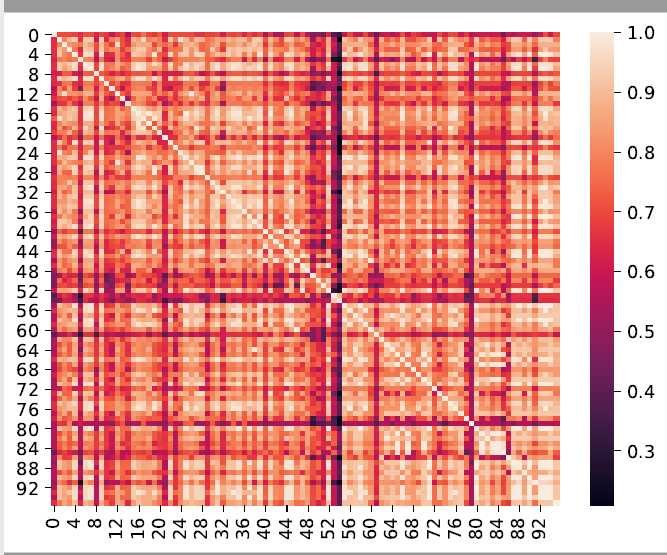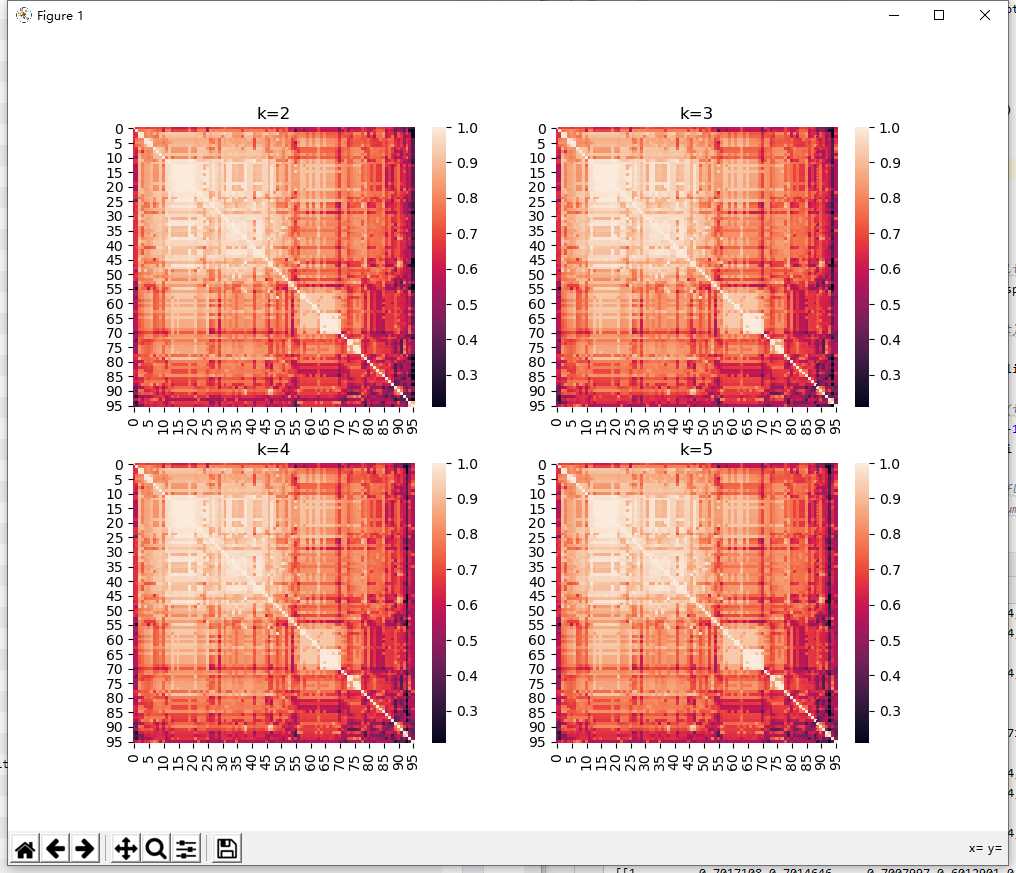标签:atp lin plt sci use more The nump app
这是原本的数据。

这是组合之后的数据

import matplotlib.pyplot as plt
import scipy
import seaborn as sns
import sys
import numpy as np
f=open(sys.argv[1],"r")
i=0
n=0
wanted=5
data=[]
line=f.readline()
while line:
if i>0:# Now reading the data in the matrix
#print(line.split())
str_list=line.split("\t")
#print(i)
#print(str_list)
j=0
for tt in str_list:
if j>0:
#print(i,j,tt)
data[i-1][j-1]=(float(tt))#set the data into array
data1[i - 1][j - 1] = (float(tt))#another one
j+=1
#num=list(map(float,line.split()))
#data.append(num)
#print(num)
else:#when i=0, the program read the name of each sequence
line=line.strip(" ")
str_list=line.split("\t")
for qwe in str_list:
if qwe.isspace()==True or qwe==‘‘:
str_list.remove(qwe)
print("numm=",len(str_list))
numm=len(str_list)
print((str_list))
data=np.zeros((numm,numm))
data1 = np.zeros((numm, numm))
i+=1
line = f.readline()
visited=np.zeros(numm)
cluster=[]
for i in range(numm):
cluster.append([i])
visited[i]=1
#cluster[i] is the set of the sequences in this cluster
# visited[i]=1 means it‘s available 0 means not available and cluster[i] will not be used anymore
clusternum=numm#how many clusters available now
#print (cluster)
fig = plt.figure(figsize=(10,8))#the size of the window for figure
while clusternum>1 :
maxx=-0.1
maxpos1=-1
maxpos2=-1
for i in range(numm):
for j in range(i+1,numm):
if data1[i][j]>maxx and visited[i]+visited[j]==2:
maxx=data1[i][j]
maxpos1=i
maxpos2=j
#find the greatest proximity
#print(cluster[maxpos1])
#print(cluster[maxpos2])
cluster[maxpos1].extend(cluster[maxpos2])#combine these two clusters into one
#print (cluster[maxpos1])
visited[maxpos2]=0#the cluster combined with bigger i will not availble any more
s=0.0
for i in range(numm):#calculate and update the new proximity with other cluster
if visited[i]==1:
s=0.0
for j in cluster[maxpos1]:
for k in cluster[i]:
#print(j,k)
#print("data",data[j][k])
s+=float(data[j][k])
s=(s/len(cluster[maxpos1]))/len(cluster[i])
#print("s=",s)
data1[i][maxpos1]=s
data1[maxpos1][i]=s
clusternum-=1
if(clusternum<=5 and clusternum>=2):#print the heatmap when 2<=k<=5
sss=[]
for i in range(numm):
if(visited[i]==True):
sss.extend(cluster[i])
print(i,len(cluster[i]),cluster[i])
print(sss)
newma=np.zeros((numm,numm))
for i in range(numm):
for j in range (numm):
newma[i][j]=data[sss[i]][sss[j]]
ax=fig.add_subplot(2,2,clusternum-1)
ax.set_title(‘k=‘+str(clusternum))
sns_plot = sns.heatmap(newma)
#sns_plot.set_title("k=",clusternum)
fig.savefig("new.pdf", bbox_inches=‘tight‘) # 减少边缘空白
print(data)
print(newma)
plt.show()
标签:atp lin plt sci use more The nump app
原文地址:https://www.cnblogs.com/hyffff/p/12863633.html